





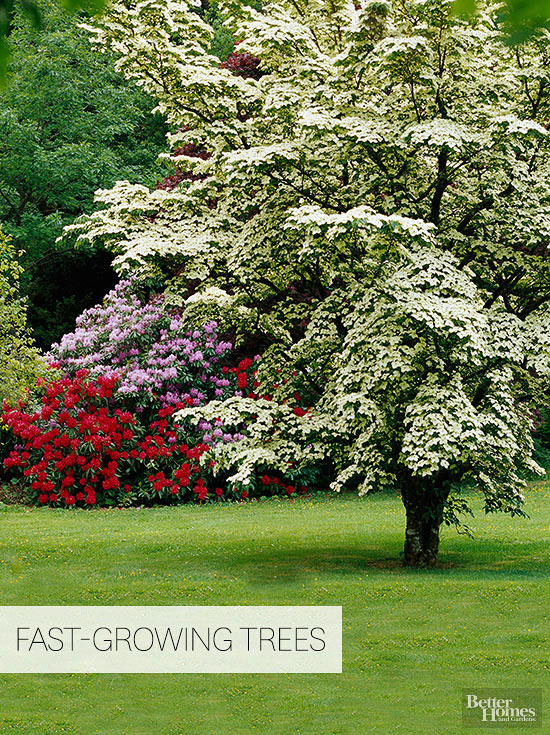
When siting fast-growing trees for privacy and charm, keep in mind that they often grow large (50 feet or more), hit maturity within 20 to 30 years, then decline, so are good candidates where you need quick shade or a windbreak while waiting for slower-growing trees to catch up.
Plant fast-growing trees in locations where their root systems won't affect other plants, and plan to cut them down before they pose a threat to buildings, people, or other plants. Always plant fast-growing trees away from utility lines, homes, and driveways to minimize damage when their branches (or even large trunks) break during storms. Pay attention to the location of septic lines and sidewalks, which can be disrupted by roots.
Some trees, especially quick growers, naturally have with narrow crotch branch attachments. Regular pruning can help but won't eliminate the problem.
continue reading belowAs long as you understand their limited lifespan, planting fast-growing trees is not a problem. Do expect some extra maintenance and damage issues when they reach maturity. For example, some selections have messy annual flower, fruit, needle, or pod droppings you will want to consider.
These trees are often selected for their rapid growth:
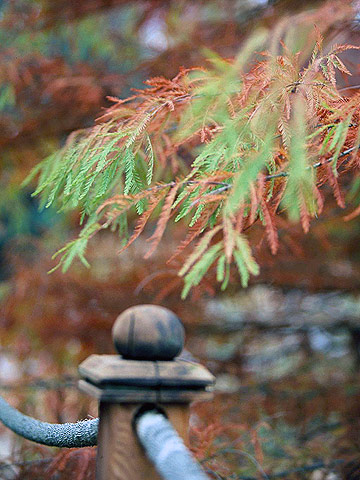
A good choice for wet or swampy sites, bald cypress (Taxodium distichum) has few insect or disease problems. The foliage turns russet red in late fall before dropping and exposing attractive reddish-brown bark. Growing at a rate of 18 to 24 inches per year, it can reach up to 100 feet tall and 40 feet wide. Bald cypress is a North American native plant. Zones 5-10
Learn more about bald cypress.
Box elder (Acer negundo) has some real drawbacks: It can be messy, weedy, and short-lived. But it thrives in tough conditions -- even in the Dakotas, western Nebraska, and eastern Colorado -- where many other trees fail. It's also useful for windbreaks and grows on most sites. Zones 2-9
Test Garden Tip: Check local restrictions before planting; it may be considered an invasive species in your area.
Chinese tallow tree (Sapium sebiferum) is a good replacement for poplars in warmer regions because it encounters fewer pests. It can show good fall color and grows with a rounded shape. At a growth rate of 12 to 18 inches per year, it eventually reaches up to 40 feet. Although it's a good shade tree, avoid placing it near decks, patios, or terrace gardens because the flower and fruit litter can be a problem. Instead, tuck boost privacy with this fast-growing tree by placing it in a back corner of your landscape. Zones 8-10
Test Garden Tip: Check local restrictions before planting; it is considered an invasive species in some regions.
Long known for their propensity to grow along rivers and other moist areas in the Eastern United States, cottonwoods (Populus deltoides) also are known for their brittle, weak wood. They grow 3 to 4 feet per year, reaching up to 70 feet tall. Their relatives, Lombardy poplars (Populus nigra var. italica), named for the Italian region where they originated, are often used as 40- to 50-foot-tall screens. Zones 3-9
Test Garden Tip: Check local restrictions before planting; some species are considered invasive pests.
A good fast-growing tree to boost privac in the corner of a large residential lot, dawn redwood (Metasequoia glyptostroboides) grows about 2 feet per year until reaching maturity at about 80 feet tall. It grows best in moist or wet soil in sun or shade. One interesting thing about dawn redwood is that it looks like an evergreen during the growing season with soft, fine needles. Then in autumn, the needles turn shades of red and brown before dropping, exposing the tree's interesting branching pattern and bark in winter. Zones 5-8
Learn more about dawn redwood.
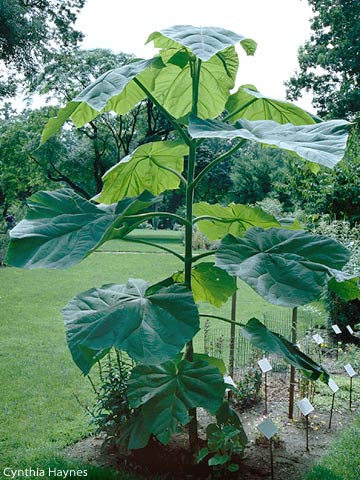
An interesting tree with an unusual shape and look, empress tree (Paulownia tomentosa) lends a tropical effect to the landscape. Plant it near other trees and shrubs, but allow for its wide spread. It grows at least 2 feet per year, reaching 50 feet tall and wide. Zones 7-9 (and southern Zone 6)
Test Garden Tip: Check local restrictions before planting empress tree; it may be an invasive weed tree in your area.
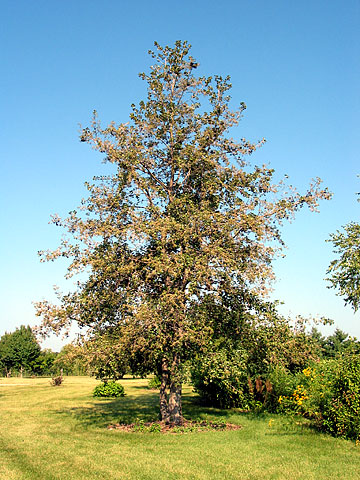
Ideal for low, wet spots in the landscape where other trees often fail, European black alder (Alnus glutinosa) is native in most areas of Europe. Avoid planting near sidewalks and sewer lines. Growing rapidly when young, it slows to 12 to 15 inches per year, reaching 40 to 60 feet tall and 20 to 40 feet wide. Zones 4-8
Test Garden Tip: Check local restrictions before planting European black alder; it may be an invasive species in your area.
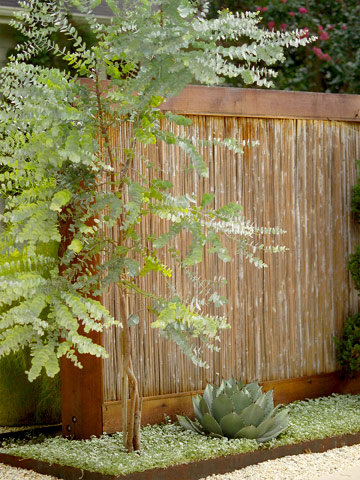
Strong, vigorous growers, gum trees (Eucalyptus spp.) can anchor a western landscape, making them a good fast-growing tree for privacy and shade. Locate gum trees where their fallen leaf and stem debris won't be a problem. Growing 2 to 3 feet per year, gum trees come in a variety of species that range from 25 to 70 feet tall. They do not perform well in the climatic extremes and humidity of the Southeast. Zones 9-10
Test Garden Tip: Check local restrictions before planting gum; some species are considered invasive pests.
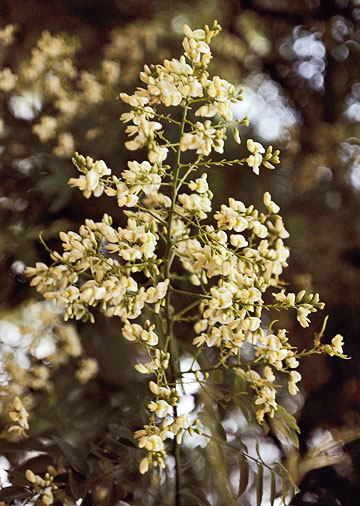
Flourishing in a somewhat limited range in the United States, Japanese pagoda tree (Sophora japonica) offers creamy flowers in summer and needs little care. A native of China and Japan, it grows 12 to 15 inches per year, and can grow to 75 feet tall and wide. Zones 6-8 (and mild areas of Zone 5)
Tolerant of southern heat and drought, lemon bottlebrush (Callistemon citrinus) can be grown in northern climates in large containers and brought in for winter. It shoots up at a rate of 10 to 15 inches per year, eventually reaching 25 feet. Bearing red flowers, it attracts hummingbirds. Zones 9-10
Leyland cypress (Cupressocyparis leylandii) can be used as an individual specimen tree or grouped for a tall, fast-growing hedge for privacy and screening. It grows 1 to 3 feet per year, reaching up to 70 feet, and prefers full sun. Its size can be controlled with pruning. Zones 7-10
One of the most common trees in the United States, the silver maple (Acer saccharinum) is native to the eastern part of North America. It grows 12 to 20 inches per year, reaching up to 100 feet tall and 70 feet wide. A common shade tree, it unfortunately has shallow roots and weak branches. Its cousin, the red maple (Acer rubrum), is also native to North America and is known for its stunning fall foliage color. Red maples grow smaller: 50 feet tall and 40 feet wide. Zones 3-9
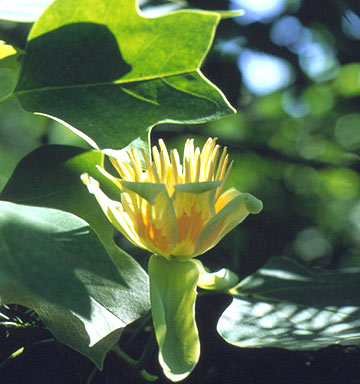
Tulip trees (Liriodendron tulipifera) are known for their beautiful yellow-orange spring flowers, unusual leaves shaped somewhat like tulip silhouettes, yellow fall foliage, and attractive form. They grow 15 to 18 inches per year and can reach up to 100 feet tall. The wood is weak; train young trees to develop wide, strong branch angles to avoid losing limbs to splitting. Zones 5-9
Learn more about tulip trees.
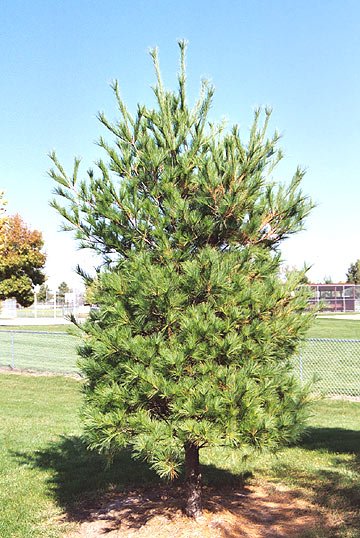
With silky, fine-texture needles and long, graceful branches, North American native Eastern white pines (Pinus strobus) are beloved for their feel and look. They grow 12 to 15 inches per year, and can reach up to 100 feet tall. Zones 3-8
An old-fashioned shade tree, southern catalpa (Catalpa bignonioides) offers small white flowers in spring. The slender seedpods that result can be messy, so grow catalpa in a background situation. It grows 12 to 15 inches per year, eventually reaching up to 40 feet tall and wide. It's native to areas of southeastern North America. Zones 5-9
Copyright © www.100flowers.win Botanic Garden All Rights Reserved